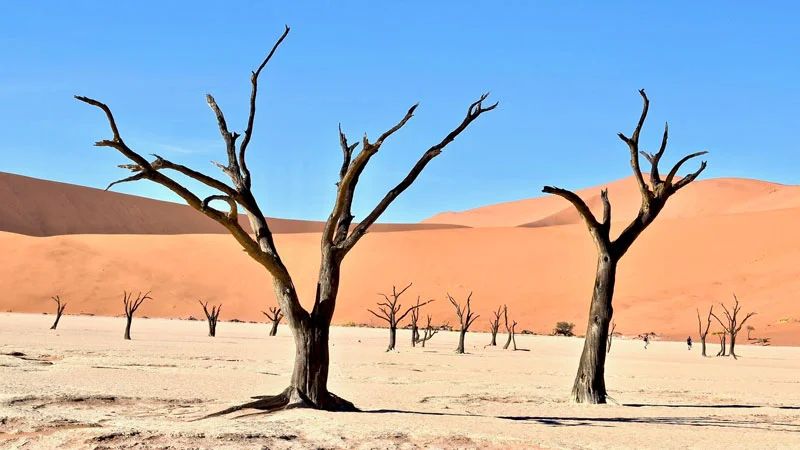3 Reasons Why My Trees Are Dying
In Arizona, we expect our trees to grow and prosper in over 100 degree temperatures and rough soil conditions. That’s a lot to expect, and not seeking professionals to guide you through choosing the right trees is a huge detriment.
It’s Like Heat Stroke for Trees
The desert floor here in Maricopa County is about 1,000 feet above sea level. Being surrounded by mountains, high pressure and an annual rain fall of just over seven inches, it’s not the most hospitable place for most plantings. Add summer temperatures that rise above 120 degrees and winters with a hard frost, it’s no wonder trees in Arizona are dying.
So, does this mean you can’t grow the trees you want to grow in your backyard? No, but it is important to know your options when choosing your trees. Broad tropical, big flower and waxy leaf trees are tough to grow due to high water content and rapid water loss through transpiration. For these kinds of trees, the Arizona landscape causes these trees what’s like heat stroke for people. It’s important to know and understand these dynamics about your trees before you start your landscaping project.
How Low, How High, How Wide?
Do you know how your tree will grow? This hugely impacts the health of a tree. Knowing first how big and fast it grows helps you to make sure it fits the location. Be sure you know before buying how high and wide the canopy will be. For example if your front yard from house to street is only 15 feet and you plant a tree that grows 35 feet wide, even if you center it, the branching will eventually grow into or over the roof line by approximately 10 feet.
Why is this a problem? It may not be if the tree is thinned out and well maintained, but if it is not you will notice branches that sprout in the same direction can create weak spots. What you would be worried about here is what is termed crossers and rubbers. This is where branches cross over each other and rub when the wind blows. This causes weak spots and as the limbs get bigger, they become heavier. Branches could snap off and create a weak spot that imbalances the canopy weight and puts the trees health in risk to pests or falling over. The broken branches and fallen trees can contribute to damaged roofs and homes. All of this is preventable if you choose the right tree and maintain it well.
Are You Watering Properly?
The last key is proper watering. In Arizona we lose a lot of trees to storms. One of the greatest culprits is improperly installed irrigation. Many landscape installers and builders will set the front yard trees up on the same valve as the plants. You might ask, why that is a problem, the plants are getting watered often? But that right there is the issue. Plants need frequent but short runs to be watered. Trees, on the other hand, need to be deep water welled and less frequently.
So when trees are on with the plants, your experience is like clockwork. After 2-3 years of being watered like that, the first summer storm that soaks the ground and the wind kicks up and the tree falls down. Next you chop it up, haul it off to the dump and if you do not change the watering, history will repeat itself. No amount of stakes and guide wires will stop it.
Ok, so what’s the solution? Put your trees on their own dedicated valve. Most trees need 2.5-3 hours of slow deep soaking. Unlike a plant having one lead per plant, trees need 4-5 one gallon emitters. The leads should be placed where the emitter is watering at the edge of the tree canopy. Not only do we want the tree to tap down but also out. Every six months to a year the leads should be extended to the edge of where the canopy resides.
This certainly is not everything to know about trees, but it provides good foundation to helping you pick the proper tree and lowers your risk to losing them. Have any more tree questions, give us a call!

